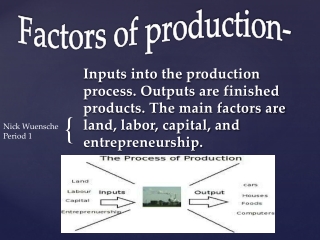

Implies that division of labor leads to innovation of new ideas because the work becomes mechanical rather than mental. Implies that repetitive working on the same process makes workers expert of that process, which leads to reduction in errors. Otherwise, it is hard to make a single pin by one worker performing all the 18 processes. This is possible if those 18 processes delegated among a number of workers. In a day, ten workers can make 48,000 pins. There are 18 processes require to manufacture a single pin. While explaining the importance of division of labor with respect to productivity, Adam Smith has used an example of manufacturing of a pin. If the process is divided among a number of workers, they would be able to perform it efficiency and in less duration of time.

Consequently, the productivity of the organization would be affected. Some processes of an organization are so long, thus, cannot be completed by a single worker or he/she would require more time to complete those processes.

Refers to one of the main advantage of division of labor. This is because laborer needs to sell his/her labor. Some of the peculiarities of labor are as follows: This peculiarity of labor differentiates it from rest of the factors of production. According to Marshall, “Any exertion of mind or body undergone partly or wholly with a view to some good other than the pleasure derived directly from the work is called labor.”Īmong all the factors of production, labor is the only factor that is living. However, in economic terms, a work, physical or mental, carried out for monetary purpose is called labor.Ī work that is undertaken by an individual for the sake of interest and pleasure, then the individual would not be regarded as labor in economics. Labor is commonly thought of a group of unskilled labor working in factories.

This factor involves human services and efforts for the production of goods or services. Labor constitutes one of the important factors of production. This leads to variation in the prices of land. Considered to have infinite variation in terms of fertility. Considered as an immobile factor of production. Regarded as a permanent input having certain inherent properties, which are original and indestructible. In such a case, capital and labor act as substitute of each other. However, if the organization has shortage of capital, then it would use more labor instead of investing on advance technology and machines. On the other hand, if an organization has enough capital to purchase advance technology, then it would prefer to reduce the number of labor. In such a case, land and capital are complementary to each other. Similarly, when skilled labor is available to produce goods and services, then only the organization would invest capital for production purpose. The factors of production can be used as complementary as well as substitute of each other.įor example, if an organization has adequate capital only then it would hire labor for producing goods and services. This implies that the factors of production should be used in combination, so that the production target can be achieved. The Federal Reserve Bank of St.The production process of an organization can be efficient, if there is an optimal use of factors. As noted above, the four factors of production are land, labor, capital, and entrepreneurship. The concept of these factors dates back to neoclassical economics, combining historic economic theories with other ideas, such as the idea of labor. The factors of production are inputs that companies need to develop goods and services. The final factor of production is entrepreneurship, which includes the visionaries and innovators who are behind the production process.Capital goods, such as tools, equipment, and machinery, are part of the capital category.Labor is made up of the individuals who are responsible for the development of goods and services.Land is defined as agricultural land, commercial real estate, and natural resources, such as oil, gas, and other commodities.Economic growth is the increase in the production of goods and services over a period of time and is dependent on the four factors of production.


 0 kommentar(er)
0 kommentar(er)
